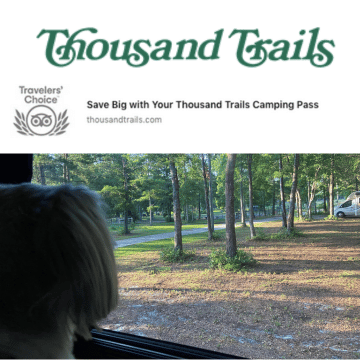My Bourbon Trail Adventure: A Long Weekend in Kentucky
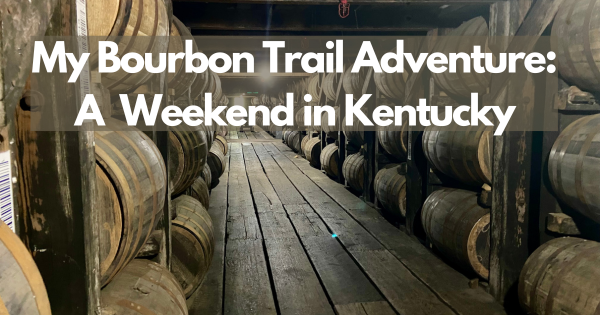
written by Nancy Carter of Making My Own Lane
This post may contain affiliate links, which means we may receive a commission, at no cost to you, if you make a purchase through a link. Please see our full disclosure for more information.
I thought I knew bourbon. I've been enjoying a glass of Kentucky's finest for years, appreciating the smooth warmth and complex flavors. But let me tell you – tasting bourbon and understanding bourbon are two completely different things.
My recent four-day exploration of Kentucky's Bourbon Trail transformed me from a casual bourbon drinker into someone who truly appreciates the artistry, science, and heritage behind every bottle. I visited four distilleries, each offering a unique perspective on bourbon production.
Where I Stayed For Bourbon Trail Exploration
Before diving into the bourbon trail, let me share how I approached this adventure from an RV perspective. I split my Kentucky stay between two strategic base camps, each chosen to maximize my access to different clusters of distilleries while minimizing drive time and stress.
My first stop was the Thousand Trails Diamond Caverns campground near Cave City. Staying here is free with my Thousand Trails membership, and I enjoyed comfortable camping with full hookups. This location gave me easy access to several distilleries in the southern part of the bourbon trail region, as well as Mammoth Cave National Park.
Later, I moved north to Kentucky Horse Park State Park Campground near Lexington, paying $45 per night with my AAA discount. This put me right in the heart of bourbon country, surrounded by rolling hills, pristine horse farms, and multiple distilleries within a 30-minute drive. The campground itself was excellent – two double horseshoe-shaped loops, a well-stocked camp store with local products, and even tennis courts. It was the perfect home base for exploring the Lexington-area distilleries.
For anyone planning their own bourbon trail RV adventure, strategic campground placement is so important. The bourbon trail distilleries are spread across roughly 100 miles, primarily concentrated in the areas around Louisville, Bardstown, and Lexington. Planning your base camps to minimize backtracking will make your experience much more enjoyable and leave you more energy for appreciating the bourbon rather than fighting fatigue from long drives.
Understanding the Kentucky Bourbon Trail
The official Kentucky Bourbon Trail includes approximately 38 distilleries, though the number can vary as new distilleries join or offerings change. There's also the Kentucky Bourbon Trail Craft Tour, which features smaller, craft distilleries. Combined, there are around 57-60 distilleries you could potentially visit across the region.
Kentucky produces roughly 95% of the world's bourbon, and there are more barrels of bourbon aging in Kentucky right now than there are people living in the state. Millions and millions of barrels, quietly resting in warehouses across this beautiful state, developing the flavors that will eventually be enjoyed around the world.
But why Kentucky? What makes this state so perfect for bourbon production? The answer lies in several factors: the limestone-filtered water that's naturally iron-free and mineral-rich, the climate with its hot summers and cold winters that push bourbon in and out of the barrel wood, and centuries of accumulated knowledge and tradition. You can make bourbon anywhere in the United States legally, but you can't replicate the Kentucky natural environment.
I knew I couldn't visit all the distilleries in one trip, so I carefully selected four that would give me a well-rounded introduction: a small craft distillery with unique connections, a major heritage distillery with deep history, a premium distillery known for its visitor experience, and another craft operation offering intimate tastings. Each one taught me something different about bourbon production and Kentucky culture.
Stop One: Balance Distilling Co.
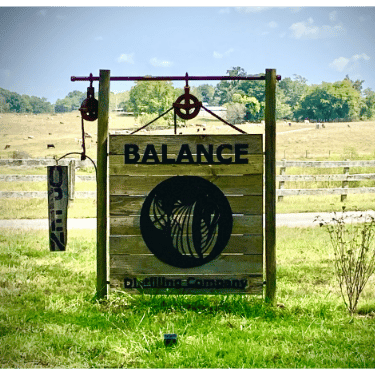
My bourbon education began at Balance Distilling Co.. Balance is a privately-owned craft distillery, the kind of operation where you can still feel the passion and personal investment in every aspect of production.
Walking into Balance Distillery felt like discovering a hidden place tucked into the hills of Kentucky. This isn't a massive commercial operation churning out millions of bottles annually – this is a family business where craftsmanship takes precedence over volume.
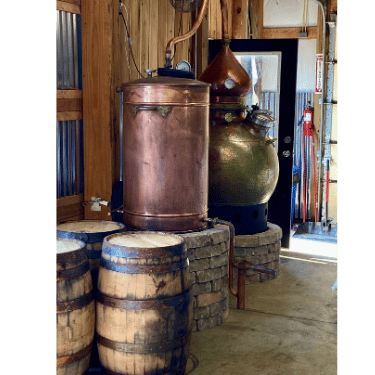
My tour started with those beautiful copper pot stills, and my guide explained why copper is essential to quality spirits production. Copper naturally removes sulfur compounds during distillation, which would otherwise create unpleasant flavors in the final product. That's why virtually every quality distillery, whether making bourbon, scotch, or any other spirit, uses copper stills or copper elements in their distillation process. The stills at Balance aren't just functional equipment – they're works of art, gleaming and well-maintained, testament to the care this operation takes with every aspect of production.
What really fascinated me was learning that Balance produces not just bourbon, but also rum, gin, and moonshine. I was told their goal is to keep the recipes original to the historical recipes of the Prohibition.
Each spirit requires its own unique techniques, its own carefully calibrated processes. The bourbon-making process alone involves countless variables: the specific grain recipe, the particular strain of yeast, the char level on the oak barrels, the location where those barrels age in the warehouse, even the weather patterns during the aging period. Every single decision impacts the final flavor profile.
The guide walked me through the entire bourbon production process, from grain to glass.
Here's what makes Balance truly special and relevant to my Kentucky adventure: they hold the trademark for Mammoth Cave Bourbon. After spending time exploring that magnificent cave system, discovering that there's a bourbon named after it felt like finding the perfect Kentucky connection.
And here's a fun fact that bourbon lovers will appreciate – Balance Distillery's Mammoth Cave Bourbon is sold in the gift shop at Mammoth Cave National Park, making it one of only two National Parks in the entire United States that sell local alcohol in their gift shops.
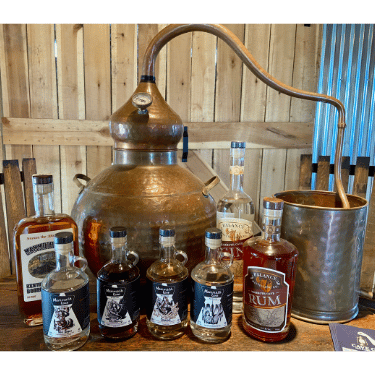
The tasting at Balance was my first real lesson in bourbon appreciation. My guide taught me the proper technique: first, observe the color (which tells you about barrel char and aging time). Then, nose the bourbon – but never stick your nose directly in the glass, as the alcohol will overpower everything. Instead, hold the glass a few inches away and gently waft the aroma toward you. Take a small sip and let it coat your entire mouth before swallowing, then pay attention to the finish – the flavors that linger after you swallow.
Each bourbon Balance produces has a distinct character. Their standard bourbon showcases classic notes of caramel and vanilla with a gentle spice. Their higher-rye expression brings more pepper and cinnamon to the forefront. Learning to identify these differences was like learning a new language – one I was eager to become fluent in.
I left Balance with not just bottles of bourbon, but with a foundation of knowledge that would inform every subsequent distillery visit. Understanding the basics of bourbon production at a smaller, craft operation made it easier to appreciate the scale and complexity of the larger distilleries I'd visit next.
Stop Two: Buffalo Trace Distillery
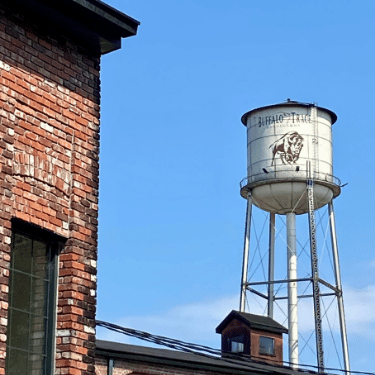
If Balance Distillery was bourbon school's introductory course, Buffalo Trace was the advanced seminar. This is one ofKentucky's most famous distilleries, producing brands like Buffalo Trace, Eagle Rare, Blanton's, Pappy Van Winkle, and many others.
It's a National Historic Landmark with a history stretching back to 1773 - making it one of the oldest continuously operating distilleries in the United States.
Getting there in my RV was its own adventure. Buffalo Trace's RV parking lot required some careful maneuvering, especially since there was a festival happening that day and the parking area was packed. I'm traveling with a 41-foot total rig (motorhome plus towed car), and finding a spot I could both fit into and eventually get out of took some concentration and patience.
I was surprised how full the parking lot was, and I had to leave the area, cross the street, and come back in again so I could approach the one remaining RV parking space and park both my RV and my Jeep in straight.
Here's where Buffalo Trace demonstrated the kind of hospitality that makes Kentucky special: they have a trolley service that picks up visitors from the RV lot and brings them to the main visitor center. Because I was running close to my scheduled tour time, they drove me over separately and escorted me right to the front of a very long line.
VIP treatment! For anyone planning to visit Buffalo Trace in an RV, know that they genuinely want to accommodate you – just allow extra time for parking and transportation.
I had booked about a week in advance for something called the Flood Tour, and getting into this tour was like winning the bourbon lottery. They only offered it six times, and I managed to secure a spot on the very last one. The tour was led by the general manager himself, which meant we were getting information and stories from someone with intimate knowledge of every aspect of the operation.
The Flood Tour focused on the devastating 1937 flood that nearly destroyed the distillery (then called George T. Stagg Distillery). The Ohio River crested at over 47.46 feet, and water reached the second floor of many distillery buildings. Our guide showed us photographs of workers in boats rowing between buildings, of barrels floating in warehouses, of the massive cleanup and rebuilding effort that followed.
Buffalo Trace is currently still cleaning up from the most recent, and flood of 2025, where the water from the Kentucky River crested at 48.27 feet . Although many of the flood effects could only be noticed if pointed out by someone who actually participated in the cleanup.
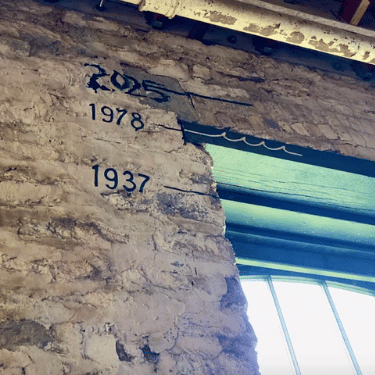
Standing in the very buildings that have survived flooding, hearing stories about how workers risked their lives to save precious barrels and protect the distillery's most valuable assets through several floods, brought history to life in a way that reading about it never could. The resilience and determination it took to rebuild and continue making bourbon through that disaster was inspiring. Buffalo Trace didn't just survive – they emerged stronger, with new systems in place to protect against future flooding.
But the tour wasn't just about history. We walked through active production areas, seeing the fermentation tanks bubbling with working mash, smelling the sweet, yeasty aroma that fills the air around fermenting bourbon. We visited the still house, where massive copper column stills work continuously, converting fermented mash into new-make spirit (what bourbon is called before it goes into barrels).
The aroma of the mash throughout the distillery was intoxicating. I suggested to the general manager that they should somehow make a candle scent to duplicate it.
Then came the barrel warehouses, and this is where you really understand the scale of bourbon production. These aren't small storage rooms – they're massive multi-story buildings, each holding tens of thousands of barrels. Our guide explained that Buffalo Trace produces about 400-500 barrels per day, every single day. Those barrels will age for anywhere from four to 23+ years, depending on the brand and expression.
The location of barrels within these warehouses matters enormously. Top-floor barrels experience dramatic temperature swings – scorching hot in summer, freezing in winter. This temperature variation pushes the bourbon deep into the barrel wood in summer, extracting color and flavor, then pulls it back out in winter, bringing those wood-derived compounds into the bourbon. Bottom-floor barrels age more slowly and evenly, with less temperature variation.
This is why single-barrel bourbons from the same distillery, even aged for the same amount of time, can taste dramatically different. One barrel might have spent its life on the top floor of a hot warehouse, developing intense flavors. Another might have aged on a cool bottom floor, resulting in a gentler profile. The master distiller's job is to understand these differences and either blend barrels to achieve consistency (for standard expressions) or select exceptional single barrels that showcase unique characteristics.
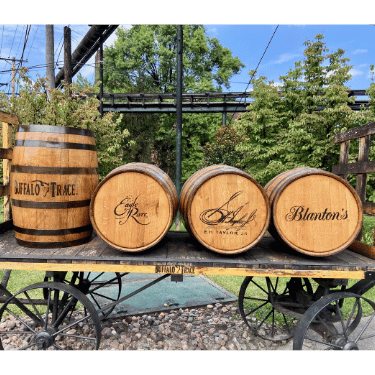
The tasting at the end of the Flood Tour included several spirits we couldn't have tried anywhere else – limited releases, barrel-proof versions, and experimental bourbons that never make it to general distribution. Each pour came with stories about the specific barrels selected, the aging conditions, and the flavor profile the distillers were trying to achieve.
Our guide also shared an invaluable tip: look for Buffalo Trace's daily specials. They rotate special bottle releases and discounts regularly, and if you're lucky, you might find something rare or get a significant discount on bottles that would cost considerably more elsewhere. I took advantage of a special that day and came home with some bourbon I probably never would have found at my local liquor store.
Stop Three: Woodford Reserve
The next day, I headed to another National Landmark property, Woodford Reserve, and I have to admit I was pleasantly surprised.
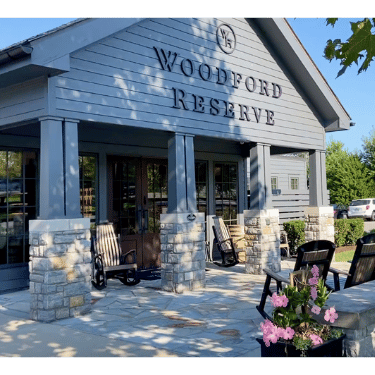
After the crowds at Buffalo Trace, I was expecting long lines and chaos. Instead, I walking right in with virtually no wait.
Sometimes timing is everything, and my morning arrival on Monday hit a perfect lull between tours.
I had booked what they call a "senses tour," and this experience revolutionized my understanding of bourbon appreciation. Instead of just sipping different bourbons and trying to describe what we tasted, they paired each whiskey with specific foods that brought out completely different flavor notes. It was a revelation.
Our guide started by explaining that bourbon, like wine, has an incredibly complex flavor profile with hundreds of distinct compounds. But unlike wine, where you can often taste the grape variety and growing region, bourbon's flavors come primarily from three sources: the grain (contributing sweet, grainy, or spicy notes), the yeast (adding fruity or floral elements), and the barrel (providing vanilla, caramel, oak, and spice from the charred wood).
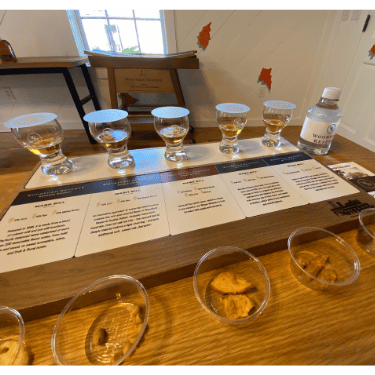
Then came the practical demonstration. First, we tasted Woodford Reserve's classic bourbon neat – no food, no ice, just the bourbon itself. I could identify vanilla, caramel, maybe some spice on the finish. Nice, but relatively straightforward.
Then we tasted the same bourbon with a piece of dark chocolate. Suddenly, the vanilla and caramel notes exploded. The chocolate somehow brought those flavors forward, making them more pronounced and distinct. It was like the bourbon had transformed into something completely different.
Next, we paired that same bourbon with a salted pretzel. Boom – another complete transformation. Now the spice notes came forward. The salt emphasized the char from the barrel and the rye spice in the mash bill. The caramel and vanilla receded into the background, letting the bolder flavors shine.
We continued through several more pairings – bourbon with aged cheddar (highlighting savory notes), bourbon with dried cherry (emphasizing fruit notes), bourbon with toasted pecans (bringing out nuttiness I hadn't noticed before). Each combination revealed different aspects of the same bourbon.
The lesson was clear: bourbon isn't one-dimensional. A good bourbon has enough complexity that different foods can highlight different aspects of its flavor profile. Our guide explained that this is why bourbon works so beautifully with food, and why thoughtful pairings can enhance both the food and the bourbon.
He recommended specific pairings for different bourbon styles: wheated bourbons (like Maker's Mark), which are softer and sweeter, pair beautifully with desserts and mild cheeses. High-rye bourbons (like Woodford Reserve or Four Roses), which are spicier and bolder, work better with savory dishes, grilled meats, or strong cheeses. Barrel-proof bourbons can stand up to intensely flavored foods that would overwhelm lower-proof spirits.
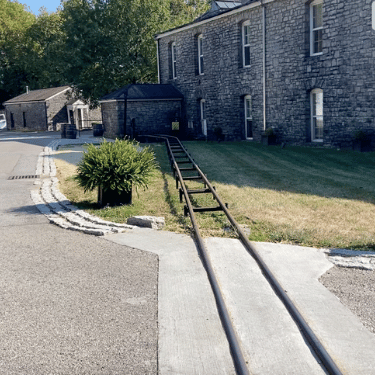
We toured the production facilities, seeing the small fermentation tanks (Woodford uses smaller tanks than most large distilleries, believing it allows for better temperature control and more consistent fermentation), the gleaming copper stills, and the bottling line where finished bourbon is carefully filtered, proofed down to bottling strength, and packaged.
The property itself is stunning – a National Historic Landmark with buildings dating back to the 1800s, surrounded by rolling Kentucky hills. A natural spring on the property provides their water source, and our guide explained that water quality is crucial to bourbon production. Kentucky's limestone-filtered water naturally removes iron (which would create off-flavors) and adds minerals that yeast loves. It's one of the geological advantages that makes Kentucky so perfect for bourbon production.
Woodford Reserve also taught me that both they and Buffalo Trace offer multiple different tour types, each with different themes and different whiskeys to sample. The offerings rotate, so if you returned on a different day or in a different season, you could have a completely different experience. That's definitely something I'm keeping in mind for future visits – you could visit the same distillery multiple times and always learn something new.
Lunch Break at Ricardo's Grill and Pub
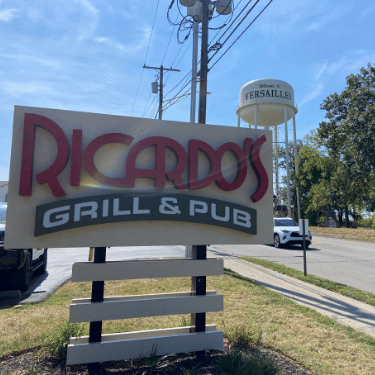
With a couple hours between my Woodford Reserve tour and my next distillery visit, I decided to treat myself to lunch at Ricardo's in Versailles. Yes, Versailles – but it's pronounced "Ver-SAILS" in Kentucky, not like the palace in France. I learned that the hard way when asking for directions!
Ricardo's is housed in an old train station, and walking in felt like stepping back to a different era. The building has retained so much of its original character – soaring ceilings, exposed brick walls, old wooden floors worn smooth by decades of foot traffic, and massive windows overlooking what used to be the railway platform where passengers waited for trains.
I ordered the catfish – and it was exceptional. Sitting there with my lunch and a glass of sweet tea, watching life go by in this small Kentucky town, I felt completely content.
This is one of the unexpected joys of solo travel – these quiet moments where you can just be present, soaking in the atmosphere of a place without having to coordinate with anyone else or maintain conversation. The server chatted with me about the bourbon trail, recommended some back roads for scenic driving, and treated me like a welcomed guest rather than just another tourist passing through.
Kentucky hospitality is real. It's not just a marketing slogan. Throughout my entire bourbon trail experience, from distillery staff to restaurant servers to fellow travelers I met along the way, everyone embodied a genuine warmth and eagerness to share what makes their state special.
Bourbon Country Roads and Scenery
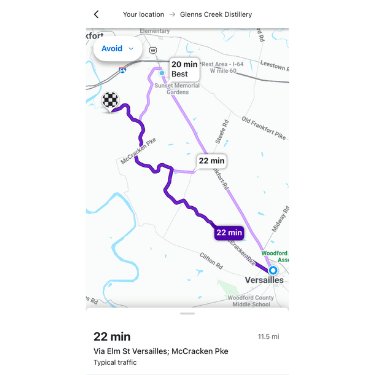
I want to take a moment to talk about the drives between distilleries, because the journey is just as much a part of the bourbon trail experience as the destinations themselves.
Kentucky bourbon country is absolutely beautiful. The landscape consists of gentle, rolling hills covered in that famous Kentucky bluegrass (which is actually green, despite the name). White board fences mark property boundaries, creating picturesque patterns across the hillsides. Thoroughbred horses graze peacefully in pristine pastures. Old tobacco barns, weathering gracefully, dot the countryside as reminders of Kentucky's agricultural heritage.
On the road to my final distillery stop, I passed several massive brick warehouses owned by Jim Beam. These aren't just storage buildings – they're where millions of gallons of bourbon are quietly aging right now, developing the flavors that will eventually be enjoyed around the world. Seeing those warehouses from the road, knowing what's inside, made me appreciate the scale of Kentucky's bourbon industry. This isn't just a tourist attraction – it's a living, working industry that's central to Kentucky's economy and identity.
There's something meditative about driving through this landscape. With the windows down on a beautiful day, you can smell the grass, occasionally catch the sweet aroma from nearby distilleries, and just soak in the peaceful beauty of rural Kentucky. I found myself taking back roads whenever possible, preferring the scenic route over faster highways.
For RV travelers, these back roads are generally narrow with many low-lying branches, one-lane bridges and lots of twists and turns. Both Buffalo Trace and Woodford have places large enough for RVs to park, but Buffalo Trace was the only one of a main road. I would not have felt comfortable driving my rig through bourbon country, except on the main roads. Have my Jeep with me made the tour a lot more enjoyable.
You can also rent a tour guide and driver to take you around, avoiding driving altogether!
Stop Four: Glenns Creek Distilling
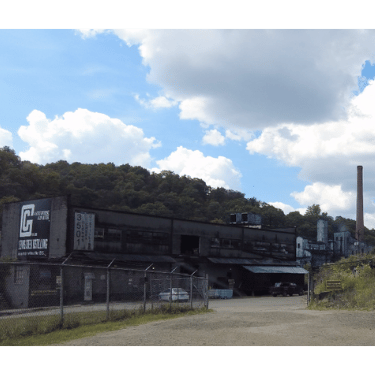
My final distillery tour was at Glenns Creek, a smaller, privately-owned operation that had taken over the Old Crow distillery buildings some years back.
After the larger, more polished operations at Buffalo Trace and Woodford Reserve, Glenns Creek felt refreshingly intimate and unvarnished.
This wasn't a huge tour group following a scripted presentation – it was just a small group of genuine bourbon enthusiasts gathering around a table with one of Glenns Creek's distillers for a tasting and open-ended question-and-answer session. It felt less like a tour and more like sitting down with a knowledgeable friend who happens to make exceptional bourbon.
What struck me immediately was how different Glenns Creek bourbons tasted compared to the others I'd sampled. These expressions were sharper, spicier, with more bite and character. They weren't smooth in the traditional sense – they were bold and unapologetic.
The distiller explained their philosophy: they're not trying to make bourbon that tastes like Buffalo Trace or Woodford Reserve or any other established brand. They're creating something distinctively their own, and they're not afraid to push boundaries.
Glenns Creek uses a higher rye content in their mash bill, which gives their bourbon that distinctive spicy, peppery profile. They also use a heavier char on their barrels – a char level that many larger distilleries would consider too aggressive. And they intentionally age their whiskey in parts of their warehouses where temperature fluctuations are more dramatic, accelerating the interaction between bourbon and barrel wood.
The result is bourbon that demands attention. It's not background music – it's a bold statement. Some people love it immediately. Others need to adjust their palate. But nobody tastes Glenns Creek bourbon and forgets it.
During our discussion, the distiller opened up about the challenges smaller distilleries face. They can't achieve the economies of scale that the big names do. They can't get the same distribution. They can't spend millions on marketing. But they also have freedoms that large distilleries don't.
Because the larger distilleries produce hundreds of thousands of barrels a year, consistency is very important to those distilleries. Every bottle to taste like every other bottle. But when you’re producing a few hundred barrels a year, they can experiment and take risks, creating bourbons that push boundaries.
He shared stories about experimental mash bills they've tried, about barrels that aged in unexpected ways, about happy accidents that led to new products. It was clear that for smaller distilleries like Glenns Creek, bourbon making is as much about exploration and creativity as it is about tradition and consistency.
The distiller also talked passionately about aging, explaining that bourbon doesn't improve linearly with age. It doesn't just get "better" the longer it sits in a barrel. There's a sweet spot for each bourbon, depending on the mash bill, the barrel, where it's aging, and even the specific weather patterns during that aging period.
They taste barrel samples regularly to determine when each barrel is at its peak.
He let us taste a barrel-strength sample straight from a barrel – something I hadn't experienced at the other distilleries. Barrel-proof bourbon is intense, usually coming off the barrel at 125-130 proof (62-65% alcohol). It's hot and powerful, but it's also incredibly flavorful. This is bourbon in its purest form, before water is added to bring it down to bottling strength.
Tasting bourbon at barrel proof gave me new appreciation for the proofing process. Adding water isn't just about reducing alcohol content – it's about finding the right proof where the bourbon's flavors are most accessible and balanced.
Glenns Creek represents an important part of Kentucky's bourbon story – the small, independent distillers who are keeping the craft element of bourbon making alive, who are willing to experiment and innovate, and who bring passion and personality to an industry that could easily become homogenized and corporate.
I left Glenns Creek with a deeper appreciation for the diversity of Kentucky bourbon. The bourbon trail isn't just about visiting famous names – it's about discovering the full spectrum of what bourbon can be.
Six Tips For Your Bourbon Trail Adventure
If I've inspired you to plan your own bourbon trail experience, here's some practical advice to help you navigate it successfully:
Book Tours Far in Advance: Popular tours at places like Buffalo Trace, Woodford Reserve, and Maker's Mark can sell out 30-90 days ahead, especially during peak seasons (spring and fall). The special tours, like that Flood Tour I did at Buffalo Trace, fill up almost immediately when new dates are announced. Don't wait until you arrive in Kentucky to book tours – do it when you're planning your trip.
Plan Your Route Strategically: The bourbon trail distilleries are concentrated in several geographic clusters. The Bardstown area has multiple distilleries within a few miles of each other. The Lexington/Versailles area that I stayed within has another cluster. Louisville has several urban distilleries. Plan your campground or hotel locations to give you reasonable drives to multiple distilleries, and group your visits geographically to minimize backtracking.
Limit Daily Distillery Visits: I learned that two distillery visits per day is really the maximum for enjoying each experience fully, unless you’re within a tour company where someone else is driving you around. Tours typically last 60-90 minutes, and that's before you factor in drive time, gift shop browsing, and any meals. Plus, even though you're only getting small tasting samples at each distillery, that alcohol adds up over the course of a day. Stay safe and stay legal – don't overdo it.
Ask About Daily Specials: Most distilleries have rotating special releases and discounts that aren't advertised online. Always ask when you arrive if there are any daily specials or limited releases available. I saved significant money and found bottles I couldn't have gotten anywhere else by asking this simple question.
Check Operating Days and Hours: Many distilleries are closed one or two days per week, and those closed days aren't always consistent (some close Mondays and Tuesdays, others close Sundays). I learned this the hard way when I couldn't visit Castle & Key because they were closed. Verify operating days and hours before planning your route.
Stay Hydrated and Eat Well: This sounds obvious, but it's easy to forget when you're focused on bourbon tasting. Drink plenty of water between distillery visits, eat substantial meals, and don't try to tough it out if you're feeling the effects of alcohol.
How Much Did My Bourbon Trail Travel Cost?
Let me share some honest talk about costs, because I know many of you are wondering whether a bourbon trail adventure fits your budget.
Tour costs varied but were generally reasonable. Most standard distillery tours ranged from $15-25 per person, with premium or specialty tours running $40-75. The tours I chose averaged about $30 each, so four distillery visits cost me roughly $120 in tour fees.
Bourbon purchases were my biggest expense, but this was discretionary – you don't have to buy bottles at every distillery, though it's tempting! I spent approximately $400 on bourbon and related products across all four distilleries. That sounds like a lot until you realize that some of these bottles would cost considerably more at home, and several aren't available outside Kentucky at all.
Camping costs were minimal thanks to my Thousand Trails membership and AAA discount. Ten nights of camping essentially cost me nothing extra beyond my membership fees, and the additional nights at Kentucky Horse Park were only $45 per night.
Food costs were moderate. I ate most meals at the campground, cooking in my RV, which kept costs low. When I did eat out, like that lunch at Ricardo's, I was looking at $20-30 per meal including tip.
Fuel costs varied depending on how much driving I did between distilleries. Planning my route efficiently helped minimize this expense, and using my Jeep (30mpg) to travel instead of my RV (9 mpg) made driving in the steep hills not only more enjoyable, but a lot less expensive.
Total costs for a long weekend on bourbon trail : approximately $300 for four days, covering tours, bourbon purchases, a restaurant meal, and campsite expenses. Tips for keeping costs manageable:
Book standard tours rather than premium tours if budget is a concern
Be selective about bottle purchases – you don't need to buy at every distillery
Take advantage of daily specials and discounts
Cook most meals at your campground rather than eating out
Plan your route efficiently to minimize fuel costs
Look for free or low-cost activities between distillery visits
Why I'm Already Planning My Return
Even as I write this, I'm already thinking my next Kentucky bourbon trail adventure. There's still so much to explore, so many distilleries I didn't visit, so many experiences I want to have.
Next time, I want to visit Maker's Mark and see their iconic hand-dipped red wax process. I want to tour Heaven Hill's facilities in Bardstown, the bourbon capital of the world. I want to experience Four Roses' unique approach to bourbon making with their ten different recipes. I want to finally make it to Castle & Key when they're open.
I also want to explore more of the craft distillery trail, seeking out those intimate, personality-driven operations that are bringing new energy to Kentucky bourbon. I want to attend the Kentucky Bourbon Festival in Bardstown. I want to time a visit for fall, when the changing leaves make the countryside even more spectacular.
But beyond the specific activities, I want to return because Kentucky reminded me why I love this RVing lifestyle. Every destination offers opportunities to learn something new, to challenge yourself, to connect with people and places in meaningful ways. Kentucky delivered on all counts.
Have you explored Kentucky's bourbon trail? I'd love to hear about your experiences in the comments. And if you're planning your own bourbon adventure, feel free to reach out with questions – I'm always happy to share what I learn with fellow travelers!
Thank you for subscribing!
Have a great day!
Other posts or videos you might like:
How Does Thousand Trails Really Work?
Florida Keys video adventures and campground reviews

About Making My Own Lane:
Hi there! I'm Nancy.
In 2023, I ditched my heels for hiking boots, sold my house, and decided to travel the US full time in my 2005 Lazy Daze Class C RV.
I love to share the places I travel to and what it's like to live in an RV full-time.
If you have ever thought about hitting the road and traveling in an RV, either in your free time or full time, you are in the right place!
Follow my solo RV adventures across America as I discover hidden gems, share practical travel tips, and prove that the best adventures often happen when you venture off the beaten path.

